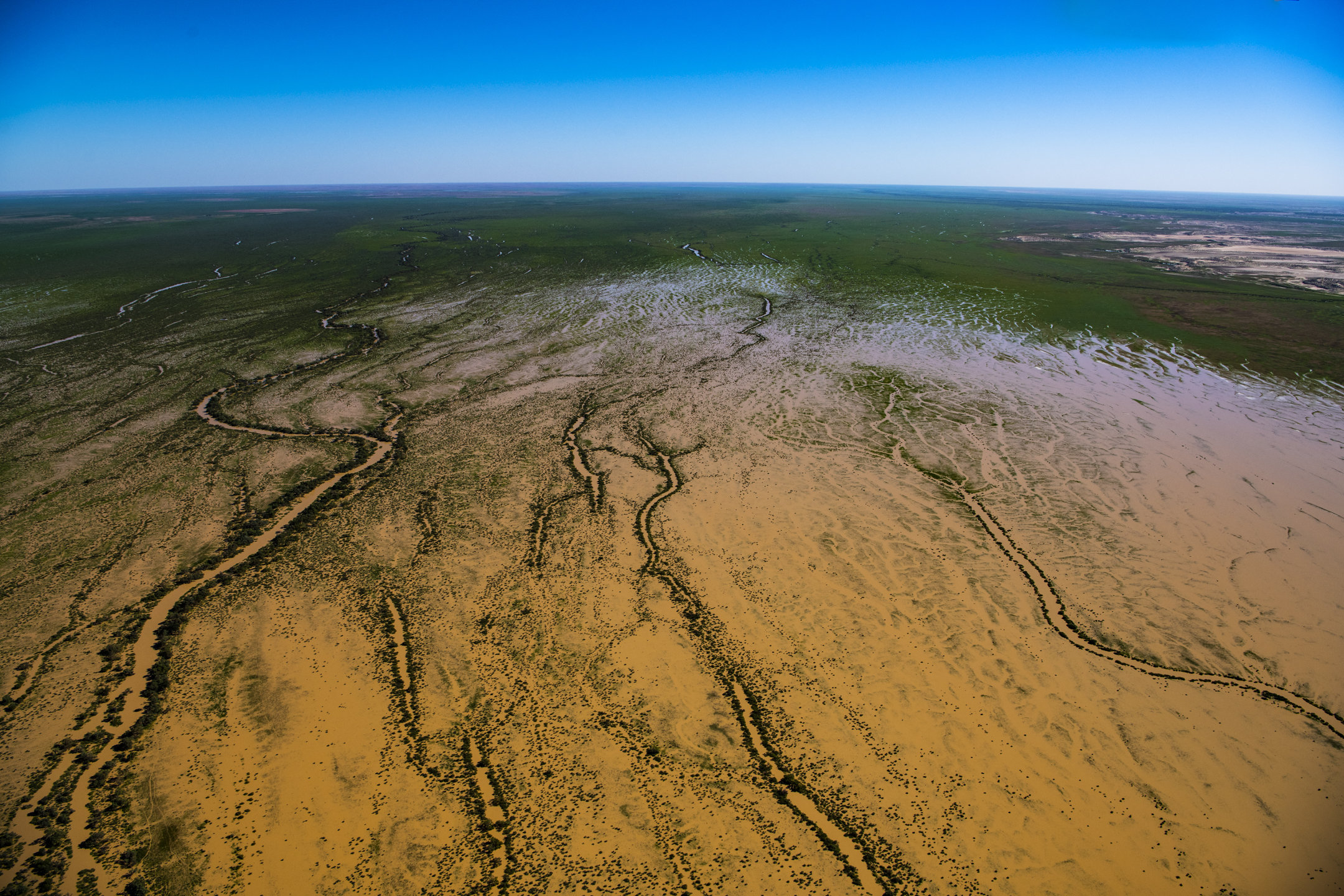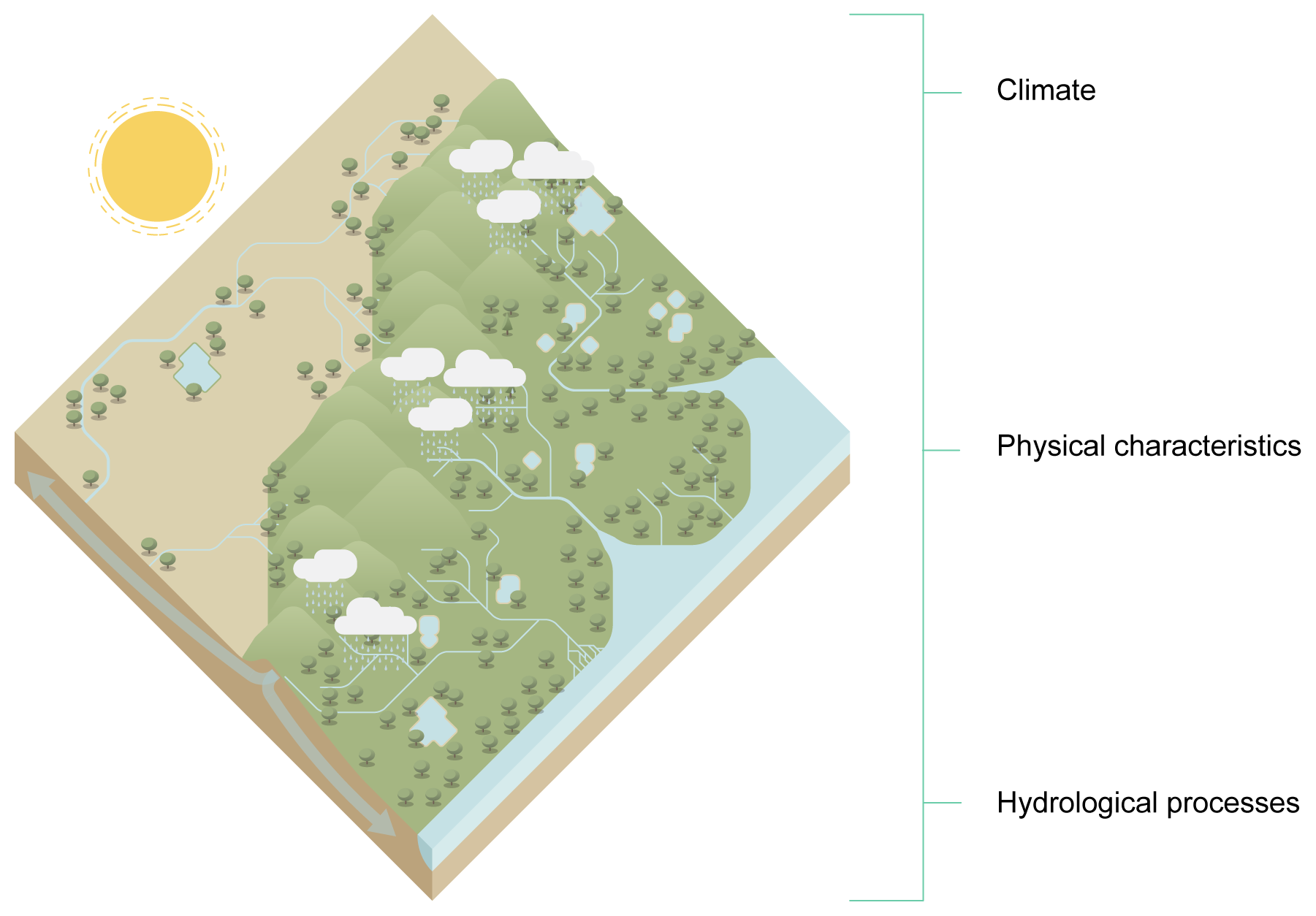|
|
HydrologyThe hydrological processes in a region are influenced by the climate and physical characteristics of the area. Examples of two different regions in Queensland include the Wet tropics and Dry tropics. The Wet tropics is characterised by high average rainfall which can produce more than 250 mm of rain per day during the wet season. In contrast, the Dry tropics experience relatively high temperatures throughout the year with low average rainfall and high rates of evaporation. Quick facts
Hydrology – RegionSelect from the tabs below
ClimateClimate is a major determinant of hydrology, and it interacts with the landscape to determine hydrological characteristics. Physical characteristicsThe hydrological character of a region is also highly dependent on the physical characteristics such as geology, topography, and the drainage basin. The underlying geology of catchments in a region influences runoff and the permeability of the rock which in turn influences, groundwater infiltration. The shape of an area (topography), including the slope of the land, influences the speed of runoff. Vegetation affects water runoff by promoting evapotranspiration and providing roughness which influences the speed of water movement across the land[2]. Human modifications to catchments such as buildings and infrastructure can create impermeable surfaces and barriers that lead to the channelling of water. Modifications to channels, such as straightening and diversions, can increase flow rates, while weirs, dams and rural water storages (farm dams) also modify natural water flow patterns. Hydrological processesWater can move through the landscape in many ways, including through surface water runoff and groundwater (groundwater recharge) and can transfer between the two systems[1]. Water also interacts with the atmosphere via evaporation and transpiration. References
Last updated: 10 May 2021 This page should be cited as: Department of Environment, Science and Innovation, Queensland (2021) Hydrology – Region, WetlandInfo website, accessed 8 May 2025. Available at: https://wetlandinfo.des.qld.gov.au/wetlands/ecology/processes-systems/water/hydrology/region.html |

 — Department of the Environment, Tourism, Science and Innovation
— Department of the Environment, Tourism, Science and Innovation



